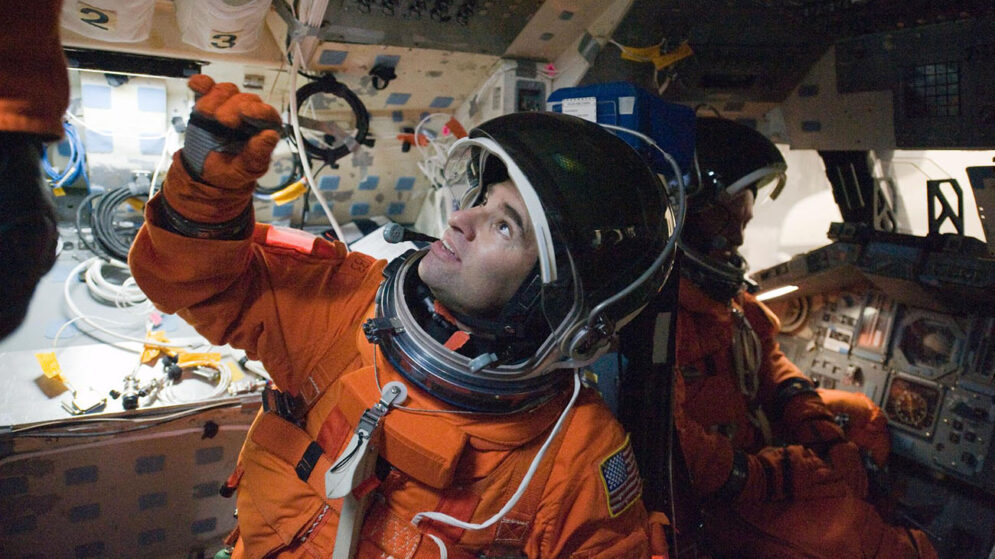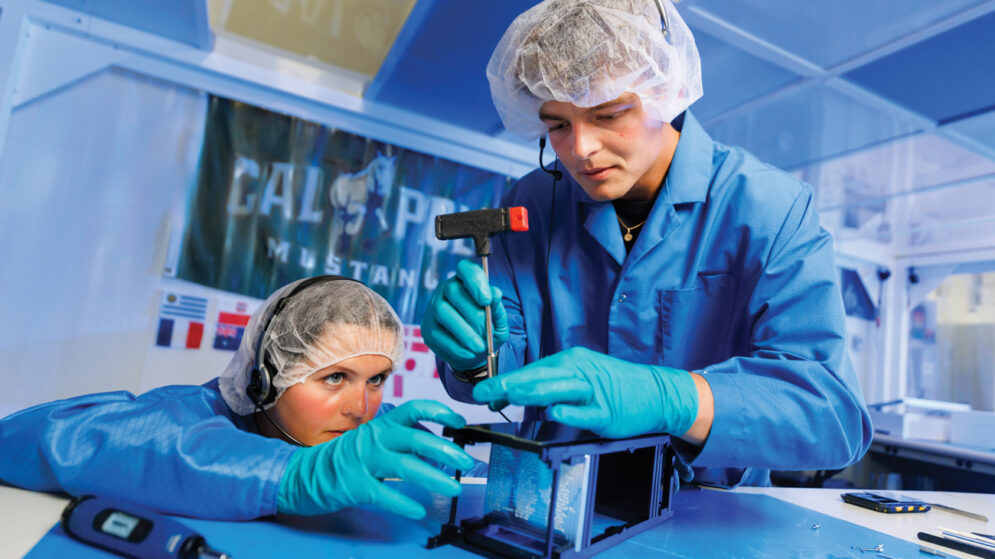Cal Poly's Astronauts
Rick “CJ” Sturckow
From road racing at Cal Poly to private space flight, one Mustang astronaut has spent four decades as the ultimate team player.
By Larry Peña // Illustration by Kyleigh Pinto
Share this article:
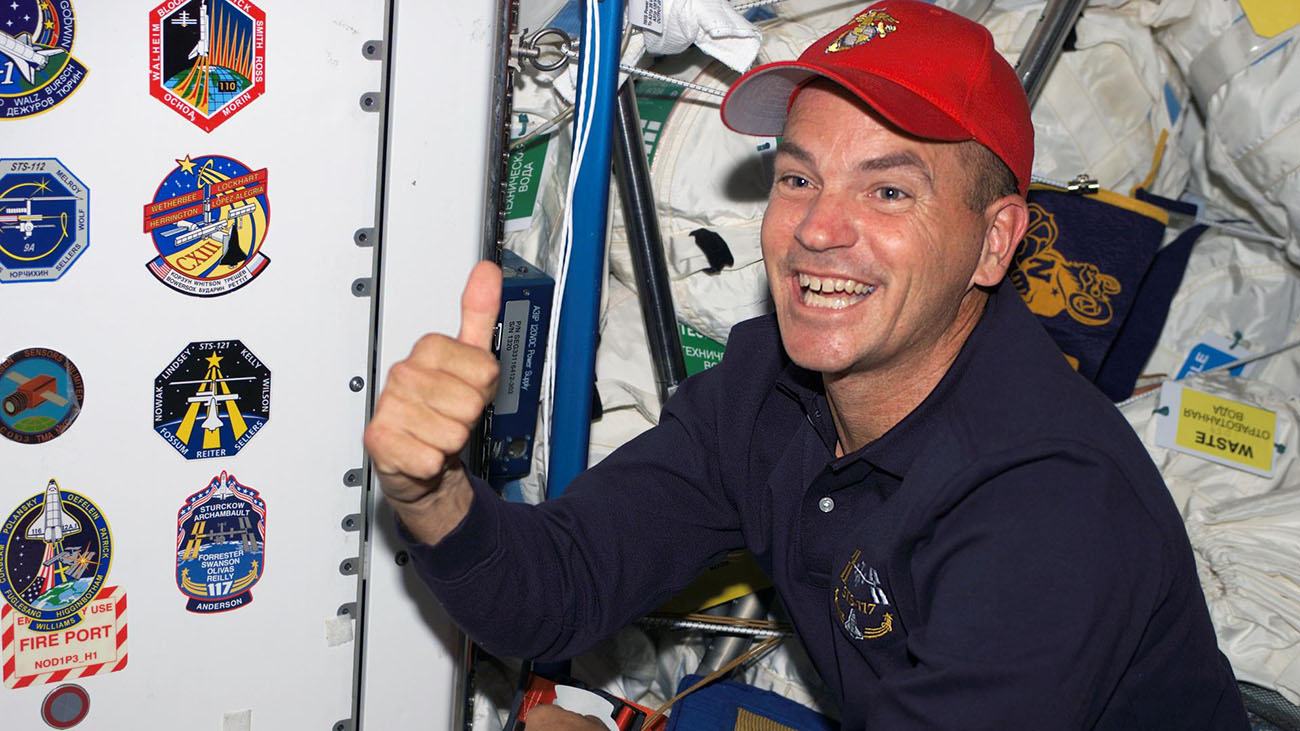
Sturckow, as mission commander, shows off the STS-117 mission insignia along with others in the Unity node of the International Space Station in 2007. Photo courtesy of NASA.
For alumnus and astronaut Rick Sturckow, the journey to the stars began in the dirt.
After graduating from high school at the age of 16, Sturckow, a racing enthusiast, landed a job working on the pit crew of an off-road racing team. At one event in Baja California, he noticed one distinctive truck on the track, emblazoned with the words “Cal Poly.” He asked the pit boss about it.
“He said, ‘Oh, that’s a bunch of college kids from San Luis Obispo who come down here to compete with professional off-road racers,’” says Sturckow. “Well, I wanted to go do that!”
RICK “CJ” STURCKOW
AT A GLANCE
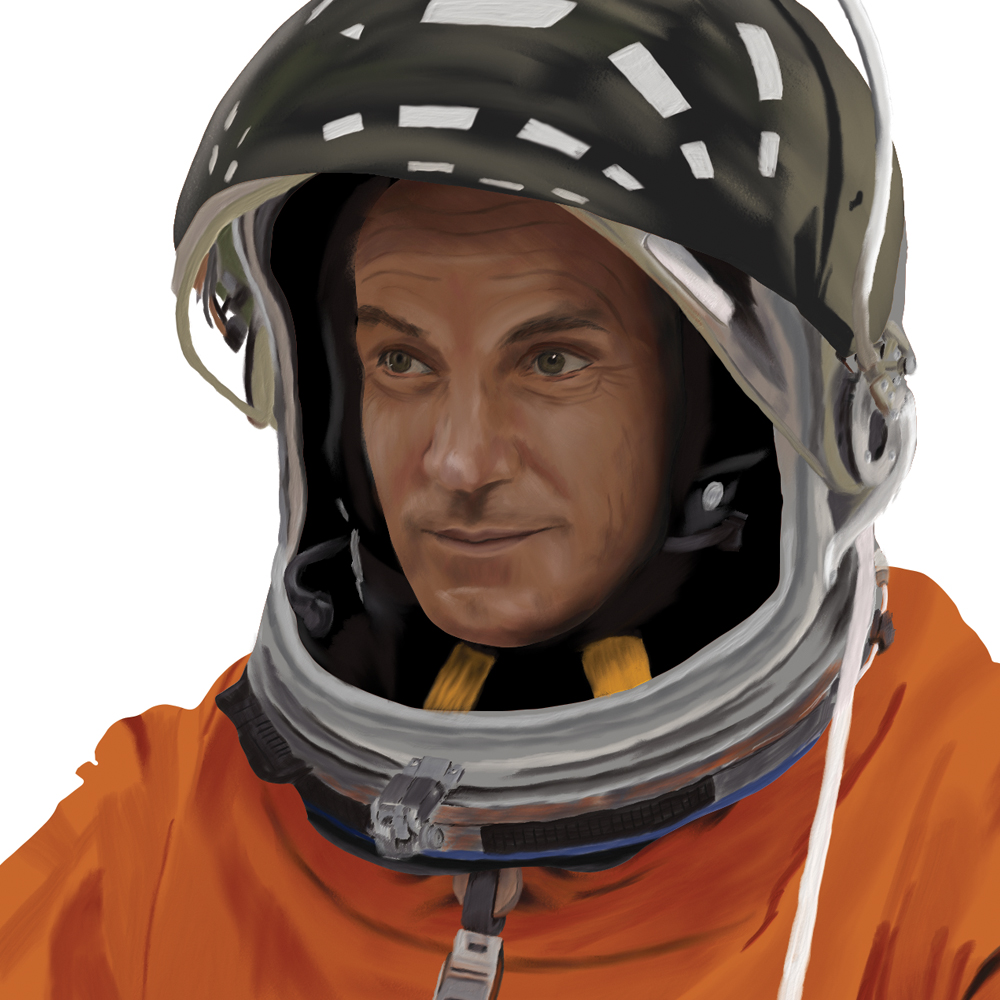
CAL POLY MAJOR
Mechanical Engineering, 1984
MARINE CORPS COLONEL AND FORMER FIGHTER PILOT
4 SPACE MISSIONS WITH NASA
1998 - Piloted Endeavour on an 11-day mission that began construction of American portion of the International Space Station
2001 - Piloted Discovery on 11-day mission to resupply and rotate ISS
2007 - First mission as commander - 13 days aboard Atlantis to deliver ISS energy systems components
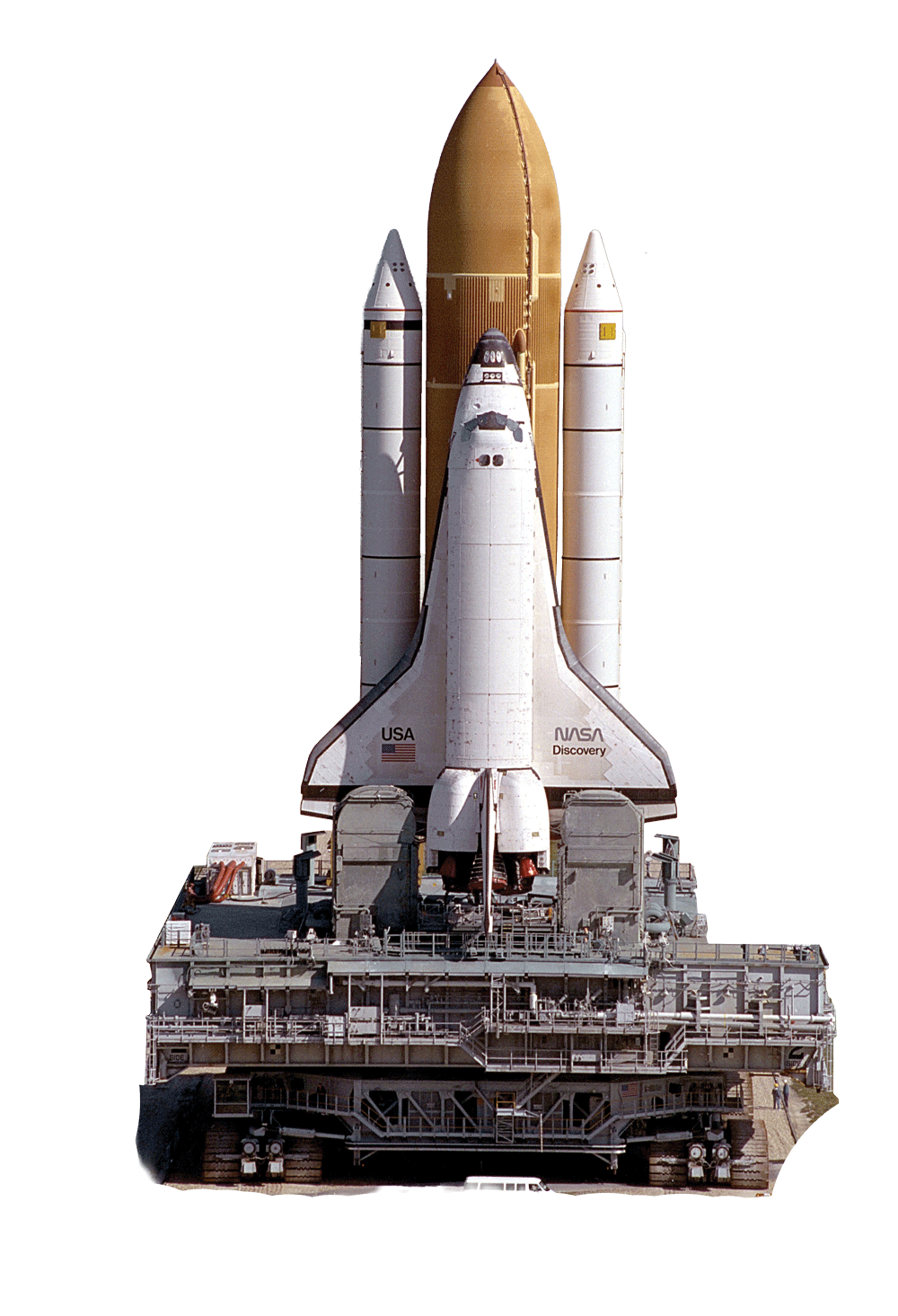
2009 - Commanded space shuttle Discovery on 13-day mission to deliver and install logistics module to ISS
TOTAL TIME IN SPACE
51 DAYS
9 HOURS 31 MINUTES
CURRENTLY A TEST PILOT AND ENGINEER FOR VIRGIN GALACTIC
At Cal Poly, Sturckow joined the Society of Automotive Engineers (currently known as Cal Poly Racing), eventually leading the team as they designed and built a new off-road racing truck to compete — very successfully — in the professional racing circuit.
“It was an exciting experience to be involved from the very beginning of a project all the way through winning the Off- Road World Championship,” he says. “Working alongside such an enthusiastic group of engineering students taught me many valuable lessons which served me well throughout my career.”
After graduating with a degree in mechanical engineering in 1984, Sturckow joined the Marine Corps and began training as an aviator, earning his wings in 1987 and flying the F/A-18. He trained at TOPGUN and flew more than 40 combat missions in Operation Desert Storm, eventually becoming a test pilot and flying more than 80 different types of military and civilian aircraft before applying to the NASA astronaut program.
Sturckow’s career as an astronaut was intimately tied with a major milestone in the history of space exploration: the construction of the International Space Station. On his first mission, in 1998, he helped attach the first American-built portion of the station to a Russian-built module that had been sent into orbit on an uncrewed mission just two weeks before.
On his subsequent missions, he helped continue history’s most ambitious off-planet construction project, delivering scientific equipment, support structures and solar energy systems to the ISS.
“It was very noticeable how the ISS had grown on each subsequent mission,” he says. “It was definitely rewarding to see the assembly sequence carried out over many years.”
Sturckow’s service at NASA extended far beyond his own space missions. He served in a variety of support and leadership roles on at least a dozen other missions, including as the capsule communications officer, or CAPCOM — the crucial point of contact between the control team on the ground and the flight crew in space.
“I supported perhaps three times the number of spaceflights I flew on working in mission control or on the launch pad strapping in crew members,” he said. “These were all equally rewarding experiences to flying to space myself.”
“The opportunity to manually fly a rocket to space and then glide it back to a landing was just too interesting to pass up.”
Rick "CJ" Sturckow
Sturckow left NASA in 2013 and accepted a role with private space flight company Virgin Galactic. “The opportunity to manually fly a rocket to space and then glide it back to a landing on a concrete runway was just too interesting to pass up,” he says.
At Virgin, Sturckow has returned to space as pilot of SpaceShipTwo and the company’s aerial launch vehicle on several missions; worked closely with the engineering teams to develop and edit the company’s flight manual; and served as a test pilot on ongoing projects to advance private space flight capabilities.
“These are exciting times to be involved in human spaceflight,” he says. “The number of individuals who are getting the opportunity to fly in space has expanded rapidly. Looking forward, it will be interesting to witness human flights back to the moon and onward to Mars.”
He credits many of his experiences flying and supporting space missions to the lessons he learned on the Cal Poly racing crew.
“Cal Poly’s philosophy of Learn by Doing provided the crucible for my development as an engineer and a leader on the SAE Off-Road truck project,” he says. “Forty years later, I can look back and point to winning that Off-Road World Championship as the catalyst for the accomplishments that followed throughout my career. I was very fortunate to have attended Cal Poly.”
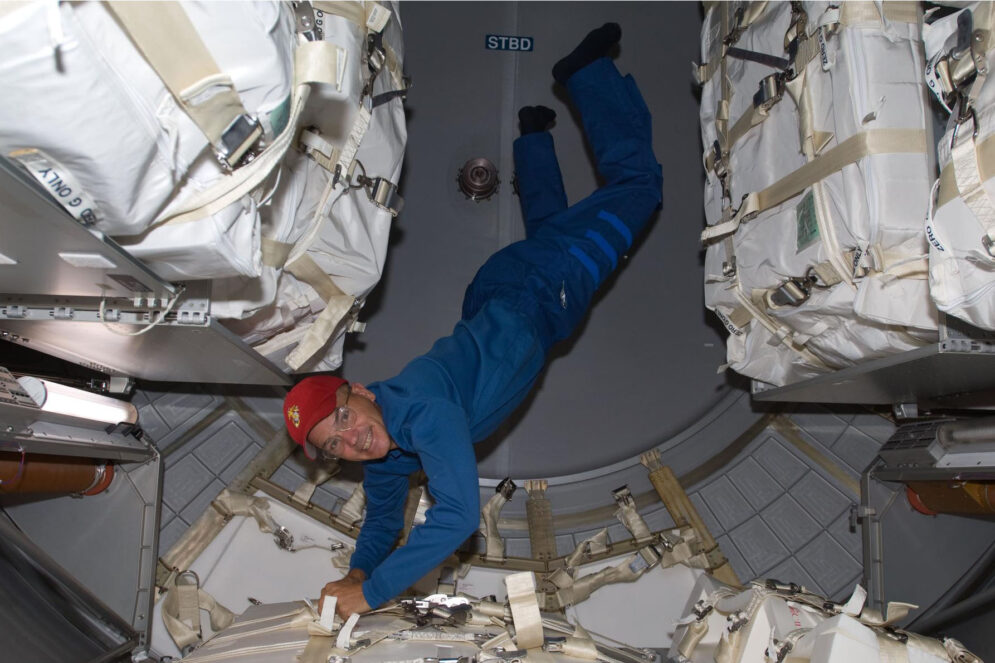
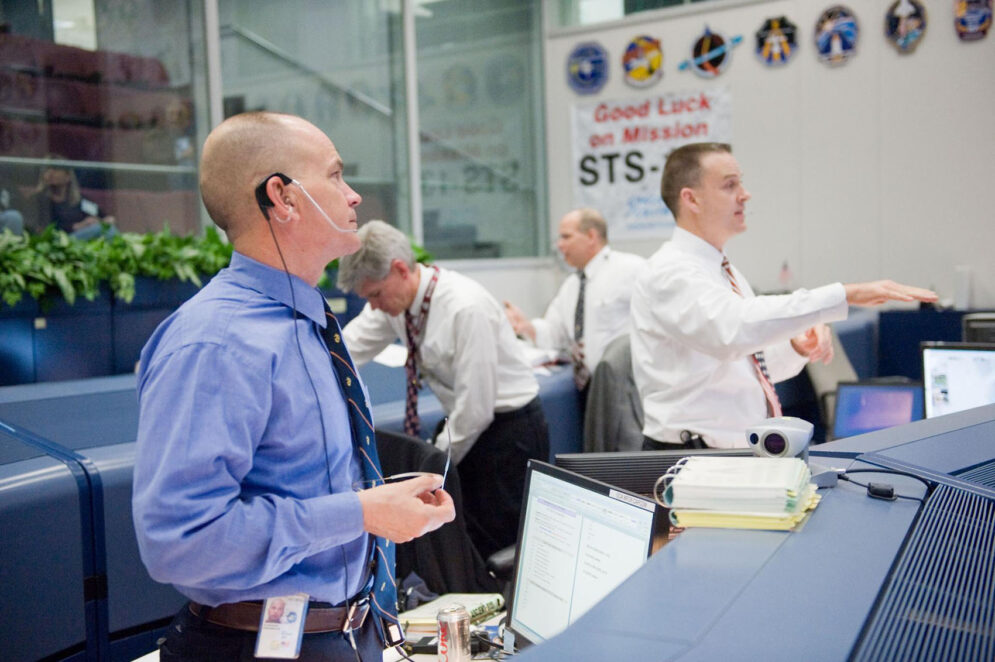
First photo: Sturckow works in microgravity in the Leonardo Multi-Purpose Logistics Module aboard the International Space Station during a mission in 2009. Second photo: Sturckow (left), serves as head communications officer for space shuttle flight STS-130 in the space shuttle flight control room at Johnson Space Center in 2010. Photos courtesy of NASA.
Your Next Read
Years of hard work and lifelong dreams of space propelled this Mustang to a historic mission aboard the International Space Station.
Cal Poly’s CubeSat Lab broke barriers. Two decades later, students are still rewriting the story.


